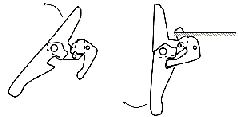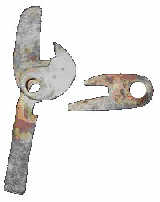The use of the bow and arrow for hunting and for war dates back to the Paleolithic period in Africa, Asia, and Europe. It was widely used in ancient Egypt, Mesopotamia, Persia, the Americas, and Europe until the introduction ofgunpowder. However, over two thousand years ago in China, the crossbow was invented as an innovation to the basic longbow that extended the use of mechanical hand-held weapons throughout the world and which revolutionized warfare.
A crossbow is a bow set horizontally on a stock. When the shooter releases a mechanism, the crossbow fires arrows or bolts propelled by the mechanical energy of previously taut bowstring. In ancient times, it could be more powerful than the ordinary bow and could fire multiple arrows, darts, or stones (nowadays the crossbow is definitely much stronger than the ordinary bow). Some designs were slower to fire than the longbow while others were small and useful for close combat.
 Chinese literary records (such as The Romance of Wu and Yue) place the invention of the crossbow in China during theWarring States Period(475-221BC) in the kingdom of Chu about 500 BC. However, many contemporary writers, such as for example Yang Hong and Zhu Fenghan, contend the that the often cited inventor improved upon a trigger mechanism, and that the crossbow may have existed from the seventh century BC or even much earlier. Some archeological evidence indicates that the crossbow was developed in China during the Copper Age around 2000 BC.
Chinese literary records (such as The Romance of Wu and Yue) place the invention of the crossbow in China during theWarring States Period(475-221BC) in the kingdom of Chu about 500 BC. However, many contemporary writers, such as for example Yang Hong and Zhu Fenghan, contend the that the often cited inventor improved upon a trigger mechanism, and that the crossbow may have existed from the seventh century BC or even much earlier. Some archeological evidence indicates that the crossbow was developed in China during the Copper Age around 2000 BC.
In Europe, crossbow-type artillery pieces were known to the ancient Greeks and were used in 397 BC at Syracuse (modern-day Sicily). Carthaginians in the second century BCE used a hand-held crossbow called the scorpion, as it is told in Derry and Williams: A Short History of Technology that 2,000 of these weapons were handed over to the Romans after the fall of Carthage (present-day North African country of Tunisia). Later, with the decline of Rome, the crossbow fell into disuse before reappearing again in Europe in the tenth century.
Author: Jeff
